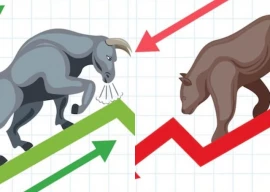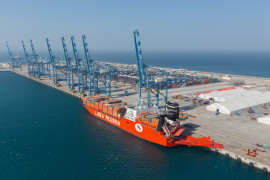
Except for the agriculture sector that grew 2.7%, the industrial and services sectors witnessed negative growth rates, pulling the overall growth rate down to negative 0.38% in the fiscal year 2019-20, ending on June 30. The per capita income in dollar terms has also dipped to 1,366 – a contraction of 6.1%, but it increased in rupee terms to Rs214,539.
The National Accounts Committee approved the provisional gross domestic product (GDP) growth rate for the outgoing fiscal year besides a downward revision of the economic growth rate for the first year of the PTI government. For fiscal 2018-19, the NAC cut the provisional growth rate of 3.3% to 1.9%, which is the lowest in 11 years.
The SBP’s quest for hot foreign money has adversely hit the industries even much before the Covid-19 started impacting the economy. In the end, neither the hot foreign money stayed in Pakistan nor the country achieved sustainable economic growth. There is a need to investigate the sources of hot foreign money inflows in Pakistan that created an artificial sense of economic stability.
Former finance minister Dr Hafiz Pasha had disputed the PTI government’s claim of a 3.3% growth rate and instead claimed a year ago that the growth in the first year of the PTI government was 1.9%. His assessment has become true and finally admitted by the government.
The Planning secretary chaired the National Accounts Committee meeting, which has representation of all the federal and provincial departments concerned, including the State Bank of Pakistan (SBP).
It is for the first time since 1951-52 that Pakistan’s economy contracted, although the pace of contraction was far lower than -1.5% growth rate predicted by the International Monetary Fund (IMF), the World Bank, the finance ministry and the SBP.
The GDP — the monetary value of all goods and services produced in a year — is projected to have a negative growth rate of 0.38% during the fiscal year 2019-20 ending on June 30, according to the NAC. These estimates are based on six to nine months provisional data projected for the whole year and adjusted for the impact of Covid-19 followed by the lockdown, it added.
The economic contraction coupled with currency devaluation has caused the size of the economy — in the US dollar terms — to slip to around $265.6 billion from $280 billion a year ago. At the end of the Pakistan Muslim League-Nawaz (PML-N) government’s term, the size of the GDP in dollar terms was $313 billion.
The GDP at the current market prices stands at Rs41.7 trillion for 2019-20. This shows a growth of 9.9% over Rs.37.9 trillion for 2018-19 due to double-digit inflation. The per capita income for 2019-20 has been calculated as Rs214,539 for 2019-20, showing a growth of 8.3% over Rs198,028 during 2018-19. However, in dollar terms, the per capita income has shrunk by 6.1% to $1,366.
The NAC also confirmed the 5.53% economic growth rate for the last year (2017-18) of the PML-N government. The growth came largely from the services sector, which was less job intensive.
Planning Secretary Zafar Hasan chaired the 102nd meeting of the NAC that endorsed the provisional economic growth rate figure on the basis of data received from the federal and provincial governments.
It was the second meeting of the NAC in the past three days. Earlier, on Friday the NAC tried to approve a -0.34% GDP growth rate for the last fiscal year but some members objected to the methodology. The figure is provisional and subject to variation until the final results are available at the end of the fiscal year.
The economic contraction depicts the challenges that the PTI government faced in its second year in power and the miseries caused by the Covid-19 that hit the world at the beginning of December 2019. However, Pakistan started getting affected by the pandemic in the fourth week of March and the government has now completely lifted the lockdown.
Almost every sector of the economy witnessed negative growth. The provisional growth rate in the second year of the PTI was significantly lower than the pace needed to absorb the youth bulge. In the pre-Covid-19 situation, the IMF and the finance ministry had a projected 2.4% growth rate due to stabilisation policies adopted under the Fund programme.
About 87% of the growth came from the services sector and its share in the total size of the economy has increased to 60%. The sectoral shares of various sectors in the economy have also slightly changed. The agricultural sector’s weight in the GDP has further reduced to 18.99% from 19.27% a year ago.
The industrial sector’s weight in the size of the economy was 20.8% a year ago that has gone down to 20.58%. However, the share of the services sector, which is less job intensive, has increased to 60.43%.
The government missed the growth targets set for the services, agricultural and industrial sectors with a wide margin. The sub-sectors of electricity generation, housing services, general government services, and other private services relatively performed better.
The electricity generation and gas distribution is the only sector that outperformed others, as its growth stood at 40.5% against the 10% target set for the outgoing fiscal year.
Adviser to the Prime Minister on Finance, Dr Abdul Hafeez Shaikh, will formally announce a provisional growth rate of 3.3% on June 11 with the release of the Economic Survey of Pakistan 2019-20.
Agriculture
After witnessing a 0.6% growth rate in the last fiscal year, the agricultural sector grew this time by 2.7%. But the government missed all its sub-sector targets except forestry and other crops. The government had set a target of 3.5% growth in the agricultural sector for this fiscal year.
The production of major crops increased by 2.9% and other crops by 4.6%. Cotton ginning contracted by 4.6%, according to the NAC. The livestock sector grew by 2.6% and the forestry sector grew by 2.3%. The fishing sector grew by only 0.6% against the 4% target.
Cotton production declined by 6.9% to 9.2 million bales. The production of rice increased by 2.9% to 7.4 million metric tons but sugarcane production fell by 0.4% to 66.9 million metric tons. The output of wheat grew by 1.7% to 24.94 million metric tons. The production of maize showed a growth of nearly 6% to 7.2 million metric tons.
Industries
The industrial sector is the worst hit by the Covid-19 situation, although there was a partial lockdown in the country and some industries kept running. The sector was already facing the brunt of the heavy taxation and unrealistically tight monetary policies that the SBP pursued the sake of hot foreign money.
The government missed some key sectoral targets except for slaughtering, electricity generation, and construction. Against a target of 2.3%, the output in the industrial sector stood at -2.64%. For the previous fiscal year too, the NAC revised the economic growth rate down to -2.2%.
The output of large-scale manufacturing contracted by 7.8% in this fiscal year while small-scale manufacturing grew 1.5% after the government adjusted the adverse impact of the Covid-19.
The slaughtering sub-sector grew at a pace of 4.1%, electricity generation and distribution by 17.7% and mining and quarrying sub-sector registered a negative growth of 8.82%. The construction sector also posted a growth of 8% this year as against a negative growth of 16.7% in the previous fiscal year.
Services
The services sector, which accounts for 60.4% of the size of the economy, contracted by 0.6% against the target of 4.6%. The wholesale and retail trade sector posted -3.4% growth against the target of 3.9%. The transport, storage, and communication sub-sector saw a -7.1% growth rate. The finance and insurance sector marginally grew by 0.8%, housing services grew 4%, general government services by 3.9% and other private services grew by 5.4%.


















COMMENTS
Comments are moderated and generally will be posted if they are on-topic and not abusive.
For more information, please see our Comments FAQ